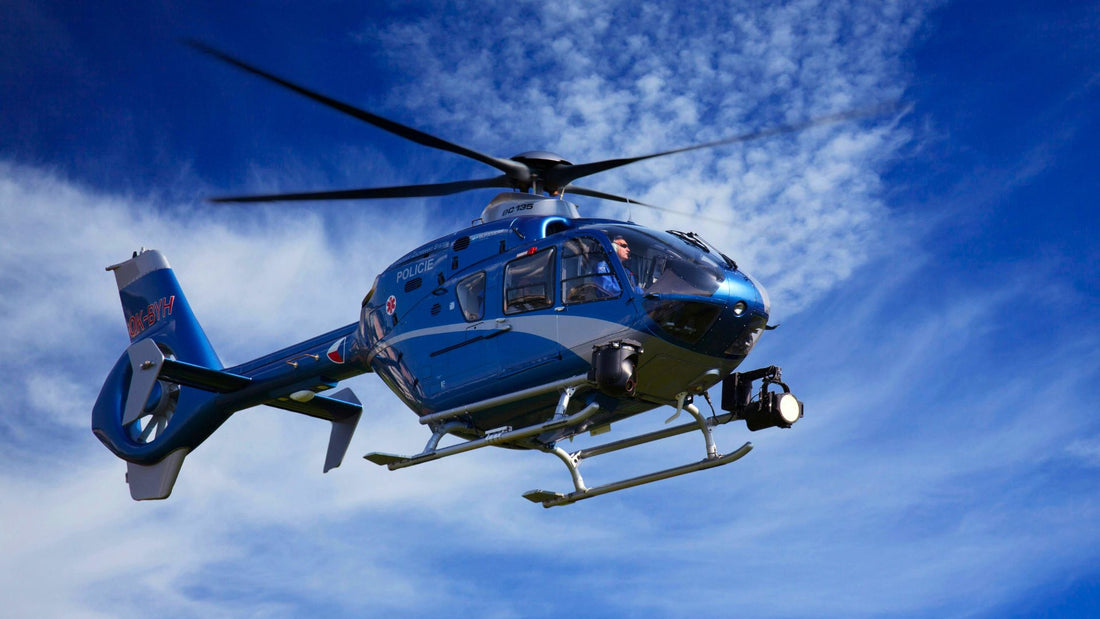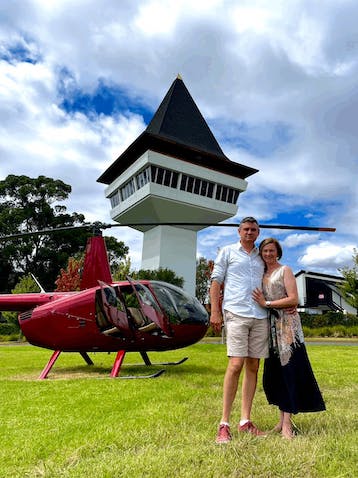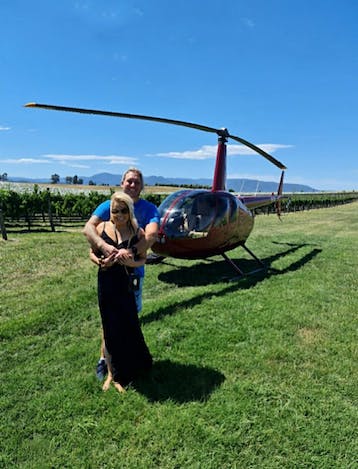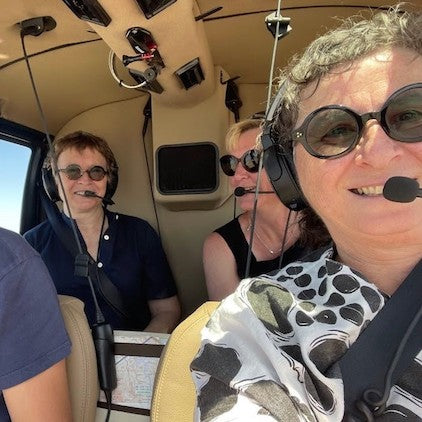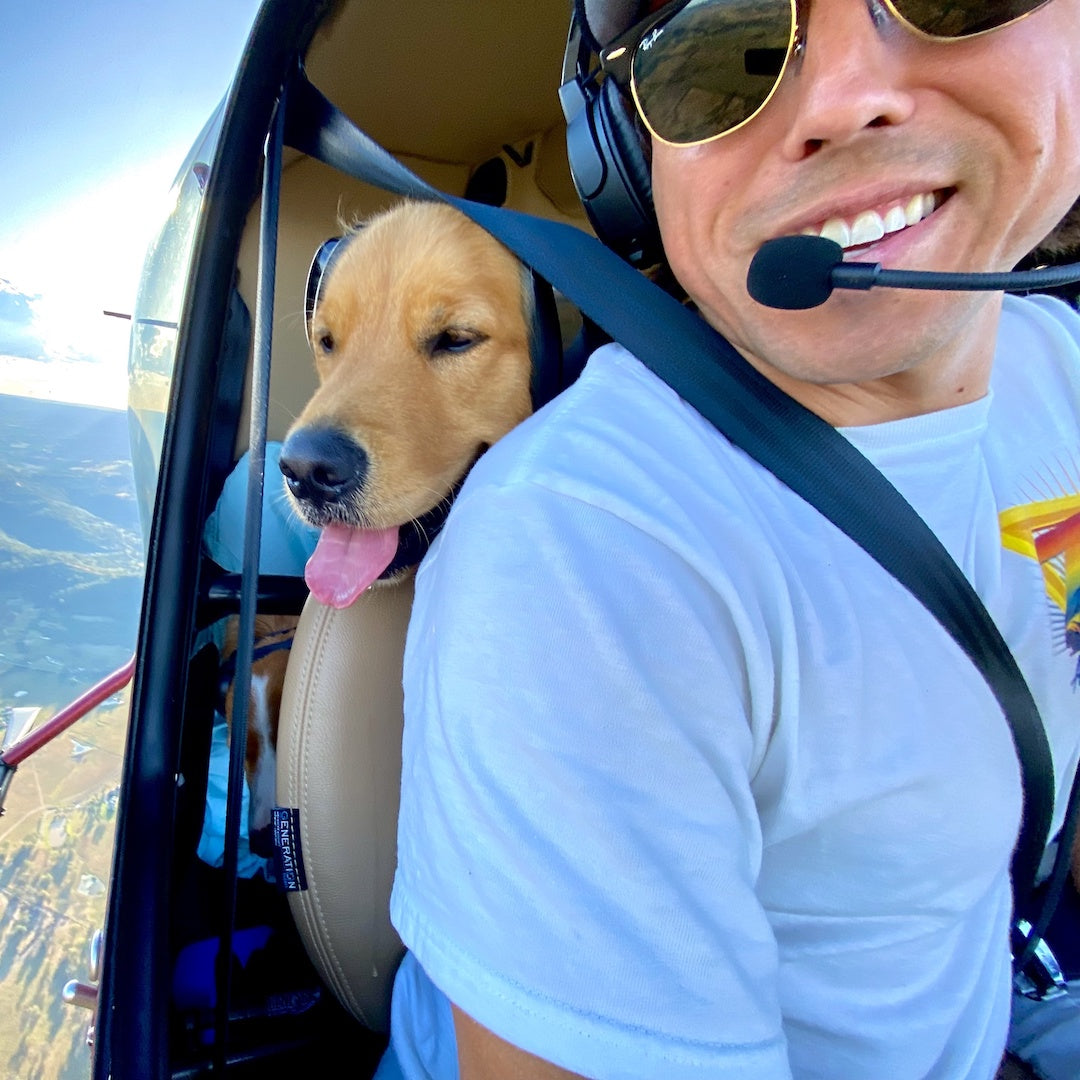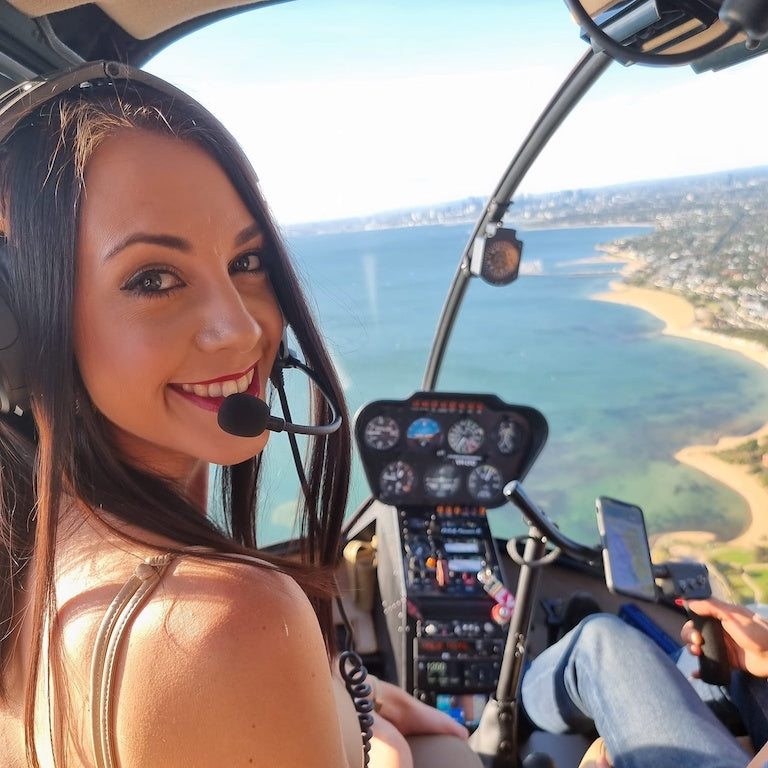If you are wondering “how high can a helicopter fly?”, then you’ve come to the right place, because these impressive machines can reach a maximum altitude of 25,000 feet, which applies to turbine powered helicopters with maximum engine power.
However, the maximum hover altitude for conventional helicopters with regular rotor blades and rotor systems is around 10,000 feet, with 13,000 feet (or slightly higher) often being considered the very upper limit for comfortable flight. Although helicopters can achieve even greater heights than this, flying at over 10,000 feet for prolonged periods puts great strain on these fantastic machines.
So, how high can a helicopter fly, and what factors affect how high helicopters can fly?
Table of Contents
- How High Can a Helicopter Fly?
- How High Can a Helicopter Fly? (Detailed Explanation)
- The Ground Effect
- Factors That Affect a Helicopter’s Maximum Altitude
- Maximum Altitude by Helicopter Type
- The Highest Helicopter Flights - Maximum Altitude Records
- How High Helicopters Fly vs Fixed Wing Aircraft
- How Low Can a Helicopter Fly?
- The Highest Helicopter Flight - Final Thoughts
How High Can a Helicopter Fly? (Detailed Explanation)
Although it depends on various factors, a helicopter can generally fly comfortably up to 10,000 feet. The reason why helicopters generally top out at a maximum altitude of 10,000 feet is because above this height, it becomes hard for a helicopter to generate enough lift. At higher altitudes, there are fewer air molecules, which reduces the air pressure and makes it difficult for the rotor to generate lift.
Now, keep in mind that this is generally considered the maximum hovering altitude for helicopters, but the maximum operational altitude is often substantially higher, often up to 25,000 feet. The comfortable hovering height of a helicopter is not the same as its maximum operational altitude.
A helicopter may be able to achieve much greater heights for short periods, well above 10,000 feet, although hovering in one spot becomes more difficult at higher altitudes, making prolonged flights above this altitude very difficult.
The reason why some helicopters, such as turbine powered helicopters, can reach altitudes of up to 25,000 feet, is because they do not rely solely on their rotor systems, but also on the great amounts of power that their engines can produce.
This is why extremely high-altitude operations, such as for high mountain rescue missions, medical evacuations military operations, and other such purposes require helicopters that can achieve the highest altitudes possible. All of that being said, because helicopters generally have to observe things on the ground, they'll stay below 3,000 feet.
The Ground Effect
What does need to be considered here is the ground effect. The ground effect is a special phenomenon that happens when a helicopter is close to the ground. Being in close proximity to the ground creates a cushion of air that allows for much greater lift and less aerodynamic drag.
This is why the average hovering height of a helicopter in open air may be 10,000 feet, but if it is hovering close to a mountain or other surface, then its maximum hovering altitude becomes much higher, often up to 13,000 feet or more.
Factors That Affect a Helicopter’s Maximum Altitude
There are many different factors that determine how high helicopters can fly, along with a variety of practical considerations. Interestingly, forward flight allows helicopters to achieve higher altitudes compared to hovering, which requires significantly more power. Let’s take a look at the different factors that affect the ability of a helicopter to fly at higher altitudes.
Air Density
The number one factor that affects how high a helicopter can fly is air density. The reason for this is because the rotor blades of a helicopter require air molecules to hang on to. Helicopters rely on air molecules for the rotors to grab onto, therefore generating lift.
The rotor’s ability to generate lift is directly related to the amount of air molecules present at a certain altitude. Because there are fewer air molecules at higher altitudes, a rotor's ability to generate lift is reduced.
When a helicopter flies higher up, it is operating in thinner air, and that reduced air density also reduces the ability for a helicopter to generate lift. After 10,000 feet, air density decreases quite rapidly, which limits most helicopters and their ability to engage in high altitude flights.
A helicopter has a much easier time generating lift at sea level than it does at a high mountain top. The more air there is, the higher a helicopter can fly.
Helicopter Weight and Design
Another deciding factor in maximum helicopter altitude is the weight and design of the helicopter. Larger rotor blades generate more lift, allowing helicopters with large rotor systems to fly much higher.
The larger the rotor blades are, the more lift a helicopter can produce, and the higher it can fly. However, there is also the power to weight ratio that needs to be considered. Helicopters maximum altitude is in part limited by its weight, because the heavier it is, the more lift those rotors need to produce to achieve the same altitudes.
Engine Power
Although it goes without saying, the more engine power and better engine performance a helicopter has, the higher it will be able to fly. The vast majority of modern helicopters feature turboshaft engines which allow the rotors to move at incredible speeds and generate great amounts of lift.
However, as air density decreases with altitude, the power output decreases. With that said, modern turboshaft engines are still much more powerful than the older piston engine that helicopters used to use.
Engine performance plays a crucial role in determining the maximum altitude a helicopter can achieve. Technological advancements in engine performance help helicopters overcome altitude limitations and enhance overall efficiency, particularly by addressing the challenges posed by thinner air at higher altitudes.
Weather and Temperature
What also needs to be considered is that colder air is denser and therefore provides the rotors of a helicopter with more grab, and therefore colder air allows helicopters to generate more thrust and fly higher up.
However, the warmer the air is, the harder of a time a helicopter will have generating thrust. This is therefore also related to the current weather, and not only temperature plays a role here, but other weather conditions as well.
Inclement weather and extreme conditions can limit the maximum altitude that a helicopter can achieve. Environmental considerations are always important to take into account.
Maximum Altitude by Helicopter Type
What we want to do now is to take a look at the maximum height or the highest altitude that helicopters can achieve based on the type of helicopter period of course, we're not going to cover all of the helicopter types here, but certainly some of the most common ones.
Light Utility Helicopters
Light utility helicopters generally have a maximum altitude of up to 14,000 feet or 15,000 feet. One common example of a light utility helicopter able to achieve these altitudes is the Robinson R44, a helicopter commonly used for private helicopter tours in Sydney and the surrounding area so tourists can see some iconic landmarks in Sydney.
Medium Utility Helicopters
We then have medium utility helicopters, with the bell 412 being a prime example. This helicopter is able to fly to heights of 16,500 feet, with some utility helicopters being able to achieve altitudes of up to 18,000 feet. This makes them ideal for a variety of purposes such as rescue operations, military operations, and more.
Heavy Lift Helicopters
We then have heavy lift helicopters, which as you can tell, are designed to lift heavy loads up to high altitudes. The maximum height of heavy lift helicopters is around 20,000 feet, with the Sikorsky CH-53E Super Stallion being a prime example.
High Altitude Helicopters
There are then also special high-altitude helicopters, ones able to achieve heights bordering 30,000 feet, something we'll take a look at below when we talk about maximum altitude records for helicopters.
The Highest Helicopter Flights - Maximum Altitude Records
When it comes to flying to high altitudes, the highest altitude ever was achieved by a French pilot. Jean Boulet, flying a SA 315B Lama, was able to achieve a height of 40,820 feet. Interesting to note is that this is not a new world record, as it was achieved in 1972 and remains unbroken to this day.
As far as other impressive feats are concerned, a high-performance helicopter, the Eurocopter AS350 B3, piloted by Didier Delsalle, landed on Mount Everest at 29,000 zero 129 feet, officially the highest helicopter landing in the world.
Of course, your average helicopter can't achieve these heights, but nonetheless, the highest altitude flight ever recorded was well over 40,000 feet.
This goes to show how these impressive machines can be used for the most challenging of search and rescue operations in mountaneous regions. Speaking of mountains, helicopters also provide for a scenic way to view the Blue Mountains near Sydney!
How High Helicopters Fly vs Fixed Wing Aircraft
Just to put this into perspective, the highest helicopter flight of a Rotary helicopter is over 40,000 feet, with the average cruising altitude of jet liners or fixed wing aircraft being somewhere between 30,000 feet and 40,000 feet.
An interesting side note is that above 12,500 feet, helicopter pilots require oxygen masks due to the thin air.
However, the vast majority of commercial airliners have a maximum service ceiling of up to 45,000 feet. That said, being able to achieve such extreme altitudes for prolonged periods requires a fixed wing design along with forward propulsion.
How Low Can a Helicopter Fly?
An interesting question that many people have is how low a helicopter can fly. Well, a helicopter is able to hover at just above ground level. With that being said, there are rules and regulations in terms of how low a helicopter is allowed to fly, particularly and certain areas, such as residential areas. In terms of scenic helicopter flights in Australia, helicopters are not allowed to fly lower than 1000 feet when flying over built up areas or 500 feet when flying over non-populated areas.
The Highest Helicopter Flight - Final Thoughts
While the highest ever flight was over 40,000 feet, expect most average helicopters to fly at no higher than 10,000 feet, which is of course still more than high enough for a scenic helicopter flight to a Hunter Valley winery!

